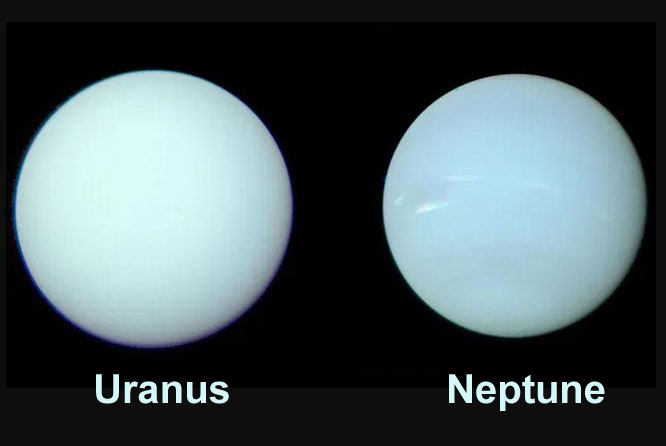While Voyager 2’s familiar images of Uranus were released in a form closer to “true” color, the images of Neptune were actually stretched and enhanced, and therefore artificially made too blue.
In the summer of 1989, from the distant reaches of our solar system, where sunlight is little more than a warm glow, NASA’s Voyager 2 spacecraft radioed back to Earth humanity’s first ever images of Neptune. The images show that the Sun’s outermost planet is a stunning dark blue orb. In contrast, Uranus, Neptune’s planetary neighbor and the first to be discovered by telescope, looked noticeably paler.
Both seemingly twin worlds have a lot in common. They are about the same size, almost the same mass, and both are surrounded by a deep atmosphere made of similar materials. So why were the two balls different shades of blue? This is a question that has puzzled scientists for decades. However, now a fresh analysis of Voyager 2 images shows that both ice giants are actually the same shade of greenish-blue, which is the “most accurate representation” of the planets’ colors, a new study shows.
Uranus and Neptune are planets that can be called “twins” of our solar system. They are almost the same size and mass, have a similar composition and structure, and even rotation speed. This makes one distinctive feature even more remarkable. Previously, it was believed that in the visible wavelength range, Neptune has a rich, deep azure tint, and Uranus has a pale blue hue, so scientists believed that a large amount of fog accumulates in the stagnant atmosphere of Uranus, which makes the planet lighter than Neptune.
Uranus, which is 1.7 billion kilometers closer to the Sun, is the coldest planet in the solar system. The minimum temperature of Uranus is minus 224 °C. On Neptune – minus 214 °C. Uranus and Neptune are structured very similarly. The small rocky core is surrounded by a mantle of water, ammonia and methane ice, then a gaseous atmosphere consisting mainly of hydrogen, helium and methane, and finally an upper atmosphere with clouds.





